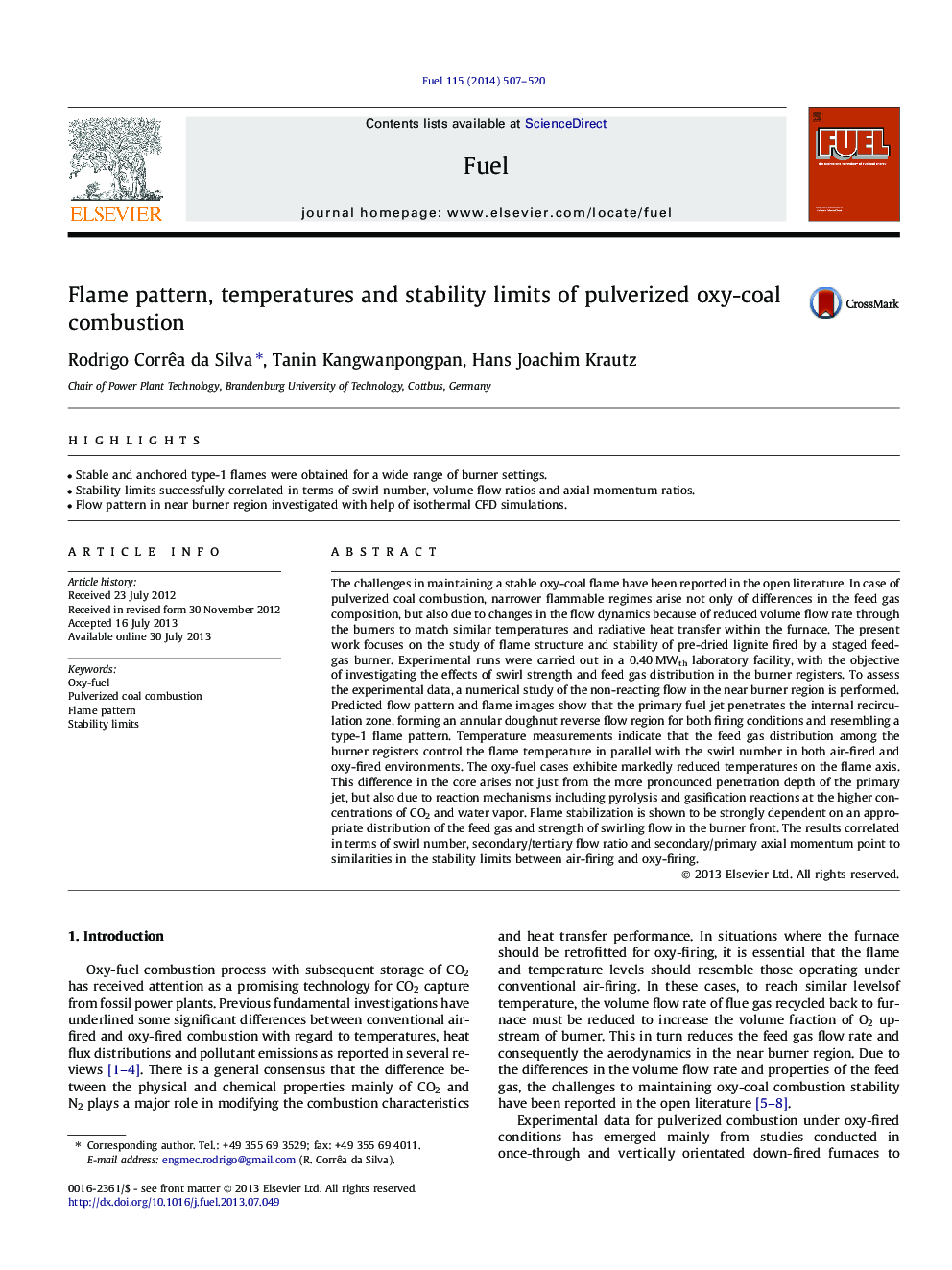| کد مقاله | کد نشریه | سال انتشار | مقاله انگلیسی | نسخه تمام متن |
|---|---|---|---|---|
| 6639432 | 461155 | 2014 | 14 صفحه PDF | دانلود رایگان |
عنوان انگلیسی مقاله ISI
Flame pattern, temperatures and stability limits of pulverized oxy-coal combustion
ترجمه فارسی عنوان
الگوی شعله، دما و محدودیت های پایداری احتراق اکسید کربن پودر
دانلود مقاله + سفارش ترجمه
دانلود مقاله ISI انگلیسی
رایگان برای ایرانیان
کلمات کلیدی
اکسی سوخت احتراق زغال سنگ پالم شده، الگو شعله محدودیت ثبات،
موضوعات مرتبط
مهندسی و علوم پایه
مهندسی شیمی
مهندسی شیمی (عمومی)
چکیده انگلیسی
The challenges in maintaining a stable oxy-coal flame have been reported in the open literature. In case of pulverized coal combustion, narrower flammable regimes arise not only of differences in the feed gas composition, but also due to changes in the flow dynamics because of reduced volume flow rate through the burners to match similar temperatures and radiative heat transfer within the furnace. The present work focuses on the study of flame structure and stability of pre-dried lignite fired by a staged feed-gas burner. Experimental runs were carried out in a 0.40Â MWth laboratory facility, with the objective of investigating the effects of swirl strength and feed gas distribution in the burner registers. To assess the experimental data, a numerical study of the non-reacting flow in the near burner region is performed. Predicted flow pattern and flame images show that the primary fuel jet penetrates the internal recirculation zone, forming an annular doughnut reverse flow region for both firing conditions and resembling a type-1 flame pattern. Temperature measurements indicate that the feed gas distribution among the burner registers control the flame temperature in parallel with the swirl number in both air-fired and oxy-fired environments. The oxy-fuel cases exhibite markedly reduced temperatures on the flame axis. This difference in the core arises not just from the more pronounced penetration depth of the primary jet, but also due to reaction mechanisms including pyrolysis and gasification reactions at the higher concentrations of CO2 and water vapor. Flame stabilization is shown to be strongly dependent on an appropriate distribution of the feed gas and strength of swirling flow in the burner front. The results correlated in terms of swirl number, secondary/tertiary flow ratio and secondary/primary axial momentum point to similarities in the stability limits between air-firing and oxy-firing.
ناشر
Database: Elsevier - ScienceDirect (ساینس دایرکت)
Journal: Fuel - Volume 115, January 2014, Pages 507-520
Journal: Fuel - Volume 115, January 2014, Pages 507-520
نویسندگان
Rodrigo Corrêa da Silva, Tanin Kangwanpongpan, Hans Joachim Krautz,
